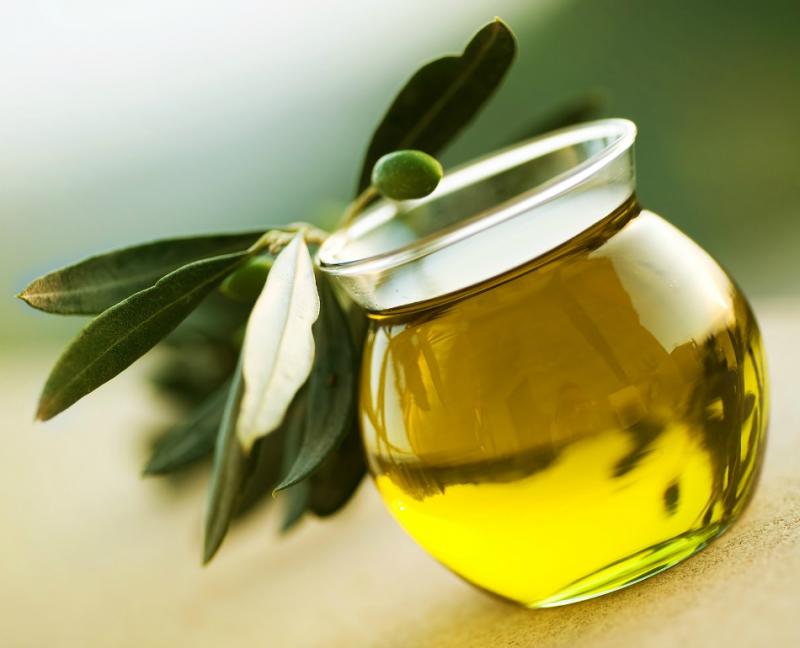We take a look at olio extra vergine di oliva, the essence of the Italian diet.
From the Ligurian coast, past the shores of Lake Garda; through Le Marche, Tuscany and Umbria way down through Lazio and Campania; all the way to Puglia, Calabria, and beyond to Sicily, Sardinia and other islands: the olive tree is a dominant and enduring feature of the Italian landscape.
Indeed, the olive tree, a sturdy ancient Mediterranean plant, is a powerful and evocative representation of culture and civilisation. The ancients considered olives not just as a food, but a general panacea, a magical elixir of health and eternal youth. Wrestlers rubbed their bodies with olive oil before their bouts. Victorious Olympians were crowned with olive wreaths. In Greek and Roman mythology the olive and its oil were foods of the gods. In the Old Testament, a dove brought back an olive branch to Noah (since then, this has been the universal symbol of peace). Kings were anointed with olive oil at their coronations.
The olive ranges in size from shrub to immense tree, and yields both fruit for eating, as well as a rich prize of precious olio di oliva, the basis of the so-called Mediterranean diet. Olive oil, and especially olio extra vergine di oliva (extra virgin olive oil) is certainly one of the greatest gifts that Italy gives to the world. A mono-saturated fat that is rich in antioxidants and ‘good’ HDL cholesterol, olive oil is widely considered one of those select superfoods that are at once good for us, as well as utterly delicious. No surprise, then, that it fits in so well with today’s modern lifestyles and diets. Put simply, Italian olive oil is sexy!

Production Methods
The traditional production of this trendy modern superfood has changed little since time immemorial. Essentially it remains a very simple process. The olives are harvested and ideally taken to the frantoio – the olive oil mill – as quickly as possible. The first phase is known as la frangitura whereby the whole olives are ground to a paste.
In the old style traditional frantoio, this was done utilising slowly revolving granite/stone millstones. Then the ground olive paste was layered into straw or fibre mats placed on top of each other in a press. Extra virgin oil would come from la prima spremitura fredda, that is the first cold pressing, whereby under gentle pressure, the liquid was extracted from the olive paste. This liquid consisted of both oil and water contained within the olives. The liquids had to be separated and this was normally achieved either by using a centrifuge or simply by decanting.

In modern state of the art frantoi, where technology is now used to make sure we get the best possible product with producers having full control of the whole process, modern machines are used for the frangitura and gramolatura leaving no room for a second pressing. So in modern systems the label “first press” is often more of a marketing tool than a real reflection of the production methods.
In both cases, the old style frantoi and the modern ones, the olive oil produced after these important phases is unfiltered olio extra vergine d’oliva, extremely low in oleic acid (by law less than 1%) and traditionally stored in large earthenware urns known as orci or in modern stainless steel containers with nitrogen. Such oil, when well made from carefully harvested olives and straight from the frantoio, is undoubtedly one of the greatest and most special food products on earth.
Regional Variations
There is almost as much variation in style, quality and character between Italian olive oils as there is between Italian wines. A number of geographical areas that are noteworthy for the quality of their oils now benefit from DOP (Dominazione d’Origine Protetta) status, a European system that works broadly similarly to DOC and DOCG for wines. DOP is only granted to products that have a special character unique to their area of production. Examples include olio extra vergine di oliva Chianti Classico DOP (Tuscany), olio extra vergine di oliva Garda DOP (Veneto, Trentino-Alto Adige, Lombardy), olio extra vergine di oliva Riviera Ligure DOP (Liguria), olio extra vergine di oliva Terra di Bari DOP (Puglia), olio extra vergine di oliva Brisighella DOP (Emilia-Romagna), olio extra vergine di oliva Umbria DOP (Umbria), olio extra vergine di oliva Peninsula Sorrentina DOP (Campania), olio extra vergine di oliva Monti Iblei DOP (Sicilia), to name but a few that you may encounter. Remember, any olive oil entitled to DOP status is well worth trying.

As with wine, so with oils: every region, every area, every locality will insist that theirs is the finest, not just in Italy but the world. Pride and unwavering belief in the excellence of local products is one of the most endearing features of Italy and Italians. Absolute excellence, however, is a wholly subjective judgement and in my opinion, there is not just one, but many great Italian oils that I would each consider ‘the best’.
Tuscan olive oils, for example, often produced on the same estates that make great wines, can display a characteristic lean, elegant character that is never greasy, rich or overly fatty – sensational simply drizzled over a slice of toasted unsalted Tuscan bread. There are of course tremendous variations between oils produced from olives grown near the Tuscan seaboard and those from the higher steeper wine hills of the Chianti or Montalcino. Umbria is noted for its fine, spicy, peppery olive oils. Ligurian olive oils, especially examples made primarily from the Taggiasca olive, are more yellow in colour, and may have a rather sapid, salty character that make them particularly suitable for use with fish and shellfish. Olive oils from southern regions such as Puglia and Calabria can be particularly fruity and full-flavoured; they may also be some- what less expensive than oils from trendier areas. Le Marche is the source of some fine, pungent, intensely grassy oils. Sicily too makes olive oils of great character and individuality, some with intense, beautifully persistent and pure flavours.

New Season Olive Oil - Freshness is all
One of the most exciting moments that olive oil lovers look forward to every year is the first taste of the new season olio, preferably straight from the frantoio. New oil has an incredible intensity and freshness that is quite unlike anything else. Indeed, some of the best new oils have a peppery piquancy that just catches you in the back of the throat. With time, the intensity and freshness of oils diminishes for, unlike wine, olive oil does not improve with age.
If you are lucky enough to live in a region where oil is produced, then from October-November onwards, you can go direct to the frantoio to taste and to buy. For the rest of us, look out for the new season olive oils from January onwards and always check the date on bottles (especially very expensive bottles!) to ensure the oil that you are paying for is as fresh as possible.
Extra Virgin or Virgin
Extra virgin is the highest quality and most expensive olive oil classification. In chemical terms extra virgin olive oil is described as having a free acidity, expressed as oleic acid, of not more than 0.8 grams per 100 grams. It must be produced entirely by mechanical means without the use of any solvents, and under temperatures that will not degrade the oil (less than 86°F, 30°C). In order for an oil to qualify as “extra virgin” the oil must also pass both an official chemical test in a laboratory and a sensory evaluation by a trained tasting panel recognized by the International Olive Council (IOC). The olive oil must be found to be free from defects while exhibiting some fruitiness.
Virgin olive oil has a free acidity, expressed as oleic acid, of not more than 2 grams per 100 grams and the other technical characteristics for the virgin olive oil category in the IOC standard.
Different Strokes for different Folks
Given the popularity of the Mediterranean diet in recent years, the choice of olive oils has never been greater. Supermarkets around the world now offer a remarkable range of Italian olio extra vergine di oliva, also indicated in recipes as EVO, including examples from the large and well known manufacturers as well as select single estate olive oils of the highest quality. So be adventurous, taste and discover the variety of Italian olio extra vergine di oliva, and take pleasure in finding that which suits your taste (and pocketbook) best.

Remember that oxygen, light and heat are indeed among extra virgin olive oil’s worst enemies
Extra virgin olive oil should be stored at cool temperatures, away from light and without exposure to oxygen. Make sure the shop you are getting your oil from as kept the product in proper conditions, prefer dark bottles to clear glass ones, close the bottle as soon as you finish using it and keep it in the cupboard.
Extra virgin olive oil does not age well
Check the date on the bottle and make sure you are getting oil produced during the last harvest. Buy only the quantity you might need for the year to make sure you are not stuck with old olive oil when the new fresh one is out on the shelves.
Green colour does not automatically means top quality
The most emphasized organoleptic characteristics of extra virgin olive oil is often the colour that should range between green and yellow. However, a deep green colour does not automatically indicates a better quality oil. As a matter of fact, professional olive oil tasters use blue or green coloured tasting glasses not to let the colour of the oil influence their final judgment. Focus on taste and acidity levels rather than colour when buying extra virgin olive oil.

Glasses certified by the International Olive Council and used by competition judges throughout the world. Designed to cradle perfectly in the hand, warming the oil for tasting. The cobalt blue glass masks the color of the olive oil, preventing it from influencing your organoleptic assessment.
First press and cold press
Remember that quite often the label “first press” is only a marketing tool and does not really mean that there were two different pressing phases. Extra virgin olive oil must be produced entirely by mechanical means without the use of any solvents, and under temperatures that will not degrade the oil (less than 86°F, 30°C). If it was not produced “cold press” it cannot be extra virgin olive oil.














